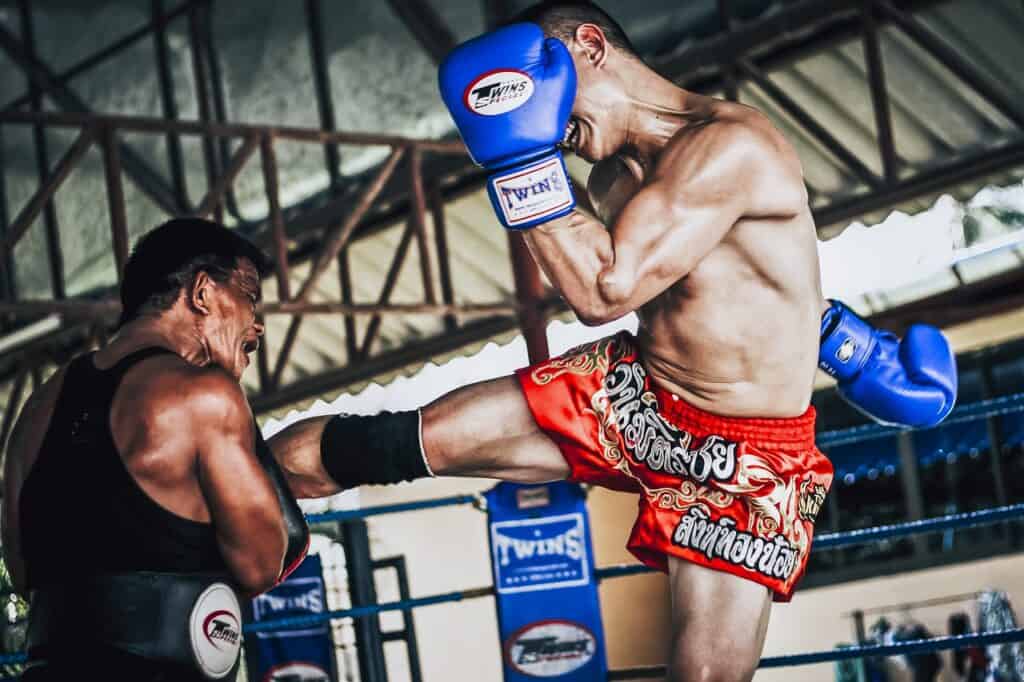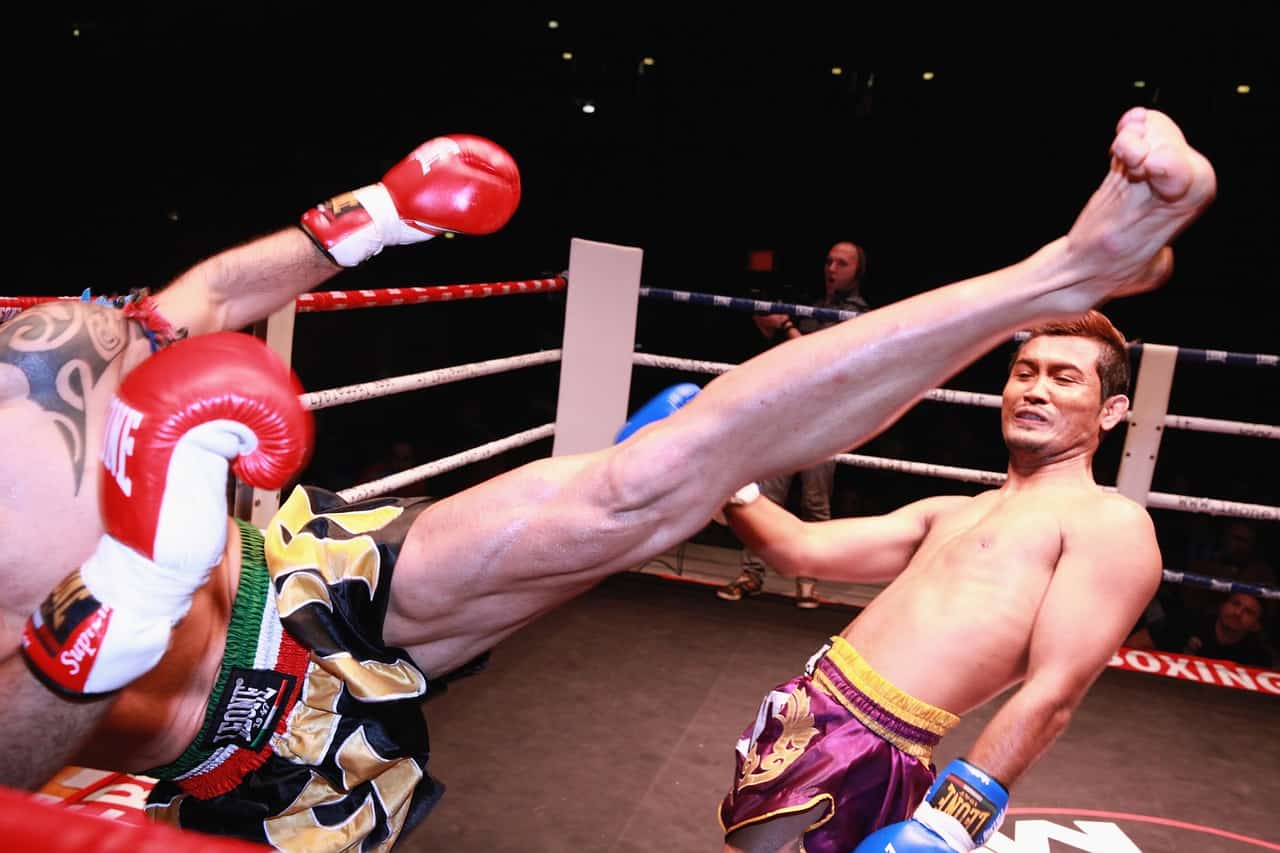When it comes to combat sports such as mixed martial arts (MMA), Kickboxing, Muay Thai ensuring the safety of the fighters is of paramount importance. One area that requires particular attention is the lower body, which is vulnerable to various strikes and kicks. This is where leg guards come into play. In this article, we will explore the significance of leg guards in MMA and how they protect the lower body during intense fights. So, let’s dive in!
Table of Contents
- Introduction: The Importance of Leg Guards
- Anatomy of Leg Guards: Understanding the Design
- Impact Absorption: Shielding Against Powerful Kicks
- Enhanced Mobility: Striking a Balance Between Protection and Agility
- Secure Fit: Preventing Slippage and Injuries
- Material Selection: Finding the Right Balance of Comfort and Durability
- Cleaning and Maintenance: Keeping Your Leg Guards in Top Shape
- Leg Guard Sizing: Ensuring the Perfect Fit
- Different Types of Leg Guards: Choosing the Right Style for Your Needs
- Leg Guards for Beginners: Entry-Level Options
- Leg Guards for Advanced Fighters: High-End Models
- Common Mistakes to Avoid When Using Leg Guards
- Integrating Leg Guards into Training Sessions: Practical Tips
- Choosing the Right Brand: Top Recommendations in the Market
- Conclusion
Introduction: The Importance of Leg Guards
In the fast-paced world of MMA, fighters rely on their agility and speed to gain an advantage over their opponents. However, this often exposes their lower body to potential injuries from kicks, strikes, and takedowns. To minimize the risk of harm, leg guards play a crucial role in providing adequate protection to the shins, calves, and knees.
Anatomy of Leg Guards: Understanding the Design
Leg guards are specially designed protective gear that covers the lower limbs of a fighter. They typically consist of a durable outer shell, a cushioned inner lining, and adjustable straps for a secure fit. The outer shell is constructed from materials like synthetic leather or reinforced plastic, which can withstand heavy impacts.

Impact Absorption: Shielding Against Powerful Kicks
One of the primary functions of leg guards is to absorb the impact of powerful kicks. The cushioned inner lining acts as a shock absorber, dispersing the force of the impact and reducing the risk of bone fractures or bruising. This crucial feature allows fighters to confidently block or check kicks without worrying about sustaining significant injuries.
Enhanced Mobility: Striking a Balance Between Protection and Agility
While protection is essential, fighters also require freedom of movement to execute their techniques effectively. Leg guards strike a balance between safeguarding the lower body and allowing for fluid motion. With advancements in design, modern leg guards offer improved flexibility and lightweight construction, enabling fighters to maintain their agility during matches.
Secure Fit: Preventing Slippage and Injuries
To ensure optimal protection, leg guards must fit securely on the fighter’s legs. Most leg guards feature adjustable straps that can be tightened for a snug fit. This prevents slippage during combat and minimizes the risk of injuries caused by misaligned guards. A secure fit allows fighters to focus on their performance without distractions.
Material Selection: Finding the Right Balance of Comfort and Durability
Leg guards are subjected to intense physical stress, making material selection a crucial aspect. The outer shell should be durable enough to withstand repeated impacts, while the inner lining should provide comfort and breathability. Manufacturers often use synthetic materials like neoprene or foam padding to achieve this delicate balance of durability and comfort.
Cleaning and Maintenance: Keeping Your Leg Guards in Top Shape
To prolong the lifespan of your leg guards and maintain their effectiveness, regular cleaning and maintenance are essential. Following the manufacturer’s instructions, you can typically hand wash or wipe down the guards using mild soap and water. It’s crucial to allow them to air dry thoroughly before storing them in a cool, dry place.
Leg Guard Sizing: Ensuring the Perfect Fit
Proper sizing is crucial for effective protection and comfort. Ill-fitting leg guards can restrict movement or leave vulnerable areas exposed. Manufacturers provide sizing charts to help fighters select the right size based on their measurements. It’s important to measure the circumference of your calf and choose a size that corresponds to the manufacturer’s guidelines.
Different Types of Leg Guards: Choosing the Right Style for Your Needs
There are various types of leg guards available in the market, each designed for specific purposes. Some popular options include shin guards, instep guards, and knee guards. Shin guards cover the shins and provide protection from kicks, while instep guards shield the top of the foot. Knee guards are designed to protect the knee joint during intense grappling or ground fighting.
Leg Guards for Beginners: Entry-Level Options
For beginners in MMA, investing in a pair of leg guards is an important step in ensuring their safety during training sessions. Entry-level leg guards offer adequate protection without breaking the bank. These guards typically feature basic designs and materials but still provide essential impact absorption and mobility.
Leg Guards for Advanced Fighters: High-End Models
As fighters progress in their MMA journey, they may opt for more advanced leg guards that offer enhanced features and premium materials. High-end models often incorporate innovative technologies, such as advanced padding systems and moisture-wicking properties. While they may come at a higher price point, these leg guards provide superior protection and durability for professional fighters.
Common Mistakes to Avoid When Using Leg Guards
While leg guards are highly effective in protecting the lower body, there are certain mistakes that fighters should avoid to maximize their benefits. Some common errors include wearing leg guards that are too loose, neglecting proper maintenance, or using worn-out guards past their recommended lifespan. By avoiding these pitfalls, fighters can ensure their leg guards continue to provide optimal protection.
Integrating Leg Guards into Training Sessions: Practical Tips
To get the most out of leg guards, fighters should incorporate them into their training sessions effectively. This can involve practicing defensive maneuvers, such as checking kicks or blocking strikes. Additionally, drills focusing on footwork and agility can help fighters adapt to the added weight and bulk of leg guards. By training purposefully, fighters can enhance their skills while staying protected.
Choosing the Right Brand: Top Recommendations in the Market
When it comes to purchasing leg guards, choosing a reputable brand is essential. Some top recommendations in the market include renowned companies like Venum, Hayabusa, and Fairtex. These brands have established themselves as industry leaders by consistently producing high-quality leg guards that offer excellent protection and durability.
Conclusion
In the demanding world of MMA, safeguarding the lower body is crucial for fighters’ safety and longevity in the sport. Leg guards provide a reliable defense against powerful kicks and strikes, while also allowing for enhanced mobility and agility. By understanding the importance of leg guards, selecting the right type, and using them correctly, fighters can focus on their technique and performance with peace of mind.
FAQs
Are leg guards only necessary for professional fighters?
No, leg guards are beneficial for fighters of all levels, from beginners to professionals. They provide essential protection during training and matches.
Can leg guards prevent all injuries to the lower body?
While leg guards significantly reduce the risk of injuries, they cannot guarantee complete protection. It’s important to practice proper technique and be mindful of potential risks.
How often should leg guards be replaced?
Leg guards should be replaced when they show signs of significant wear and tear, such as deteriorating padding or straps. It’s recommended to follow the manufacturer’s guidelines for the lifespan of the guards.
Can leg guards be used in other combat sports besides MMA?
Yes, leg guards are used in various combat sports such as Muay Thai, kickboxing, and taekwondo, to provide protection to the lower body.
Do leg guards affect my performance in terms of speed and agility?
Modern leg guards are designed to strike a balance between protection and mobility. While they add some weight and bulk, their impact on speed and agility is minimal, allowing fighters to perform at their best.
Incorporating leg guards into your MMA training and matches is a wise choice to prioritize your safety. By investing in quality leg guards, you can protect your lower body from powerful strikes and kicks while maintaining the agility and mobility required to excel in the sport. Stay safe, train smart, and unleash your full potential in the world of MMA.

